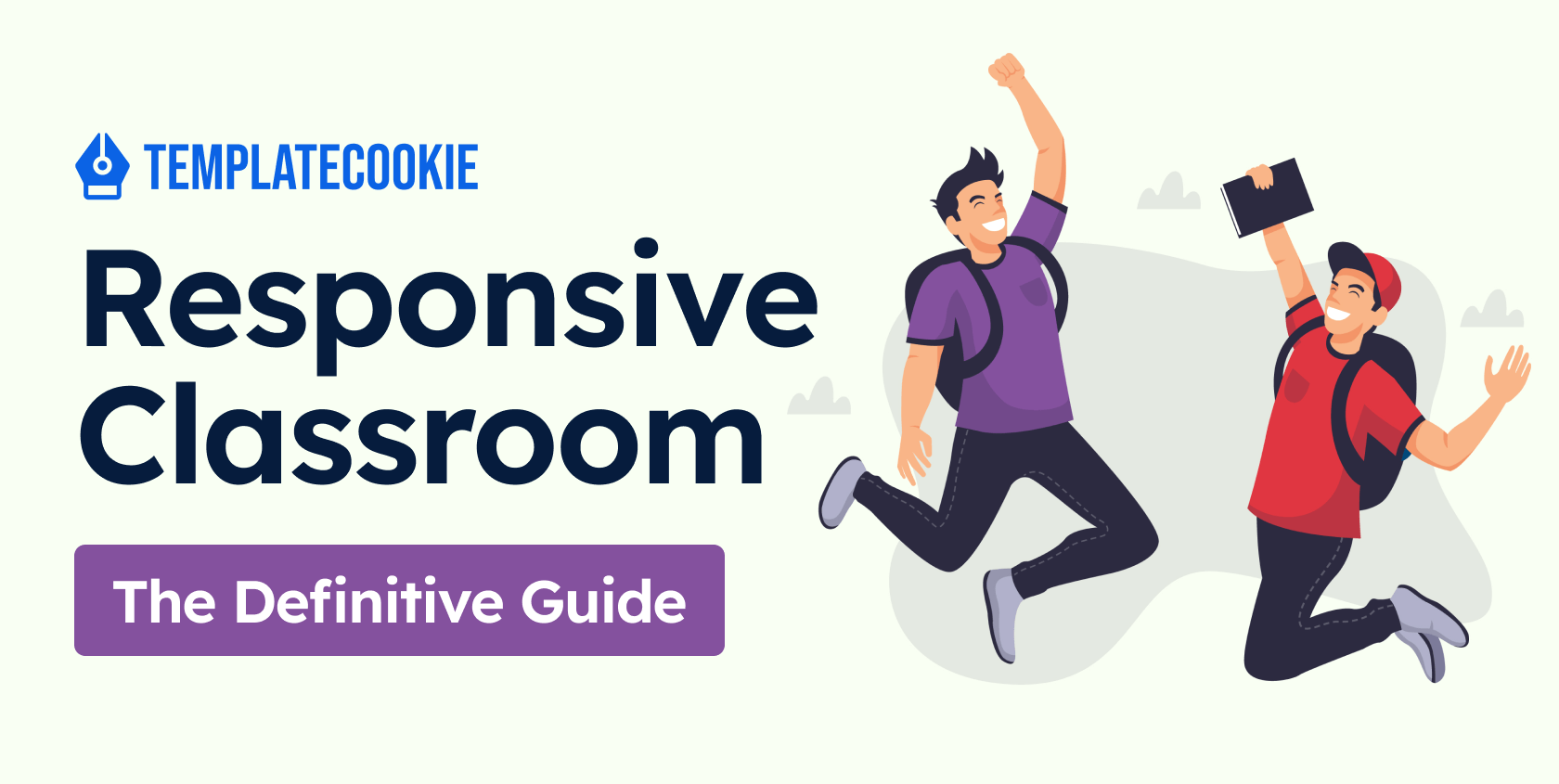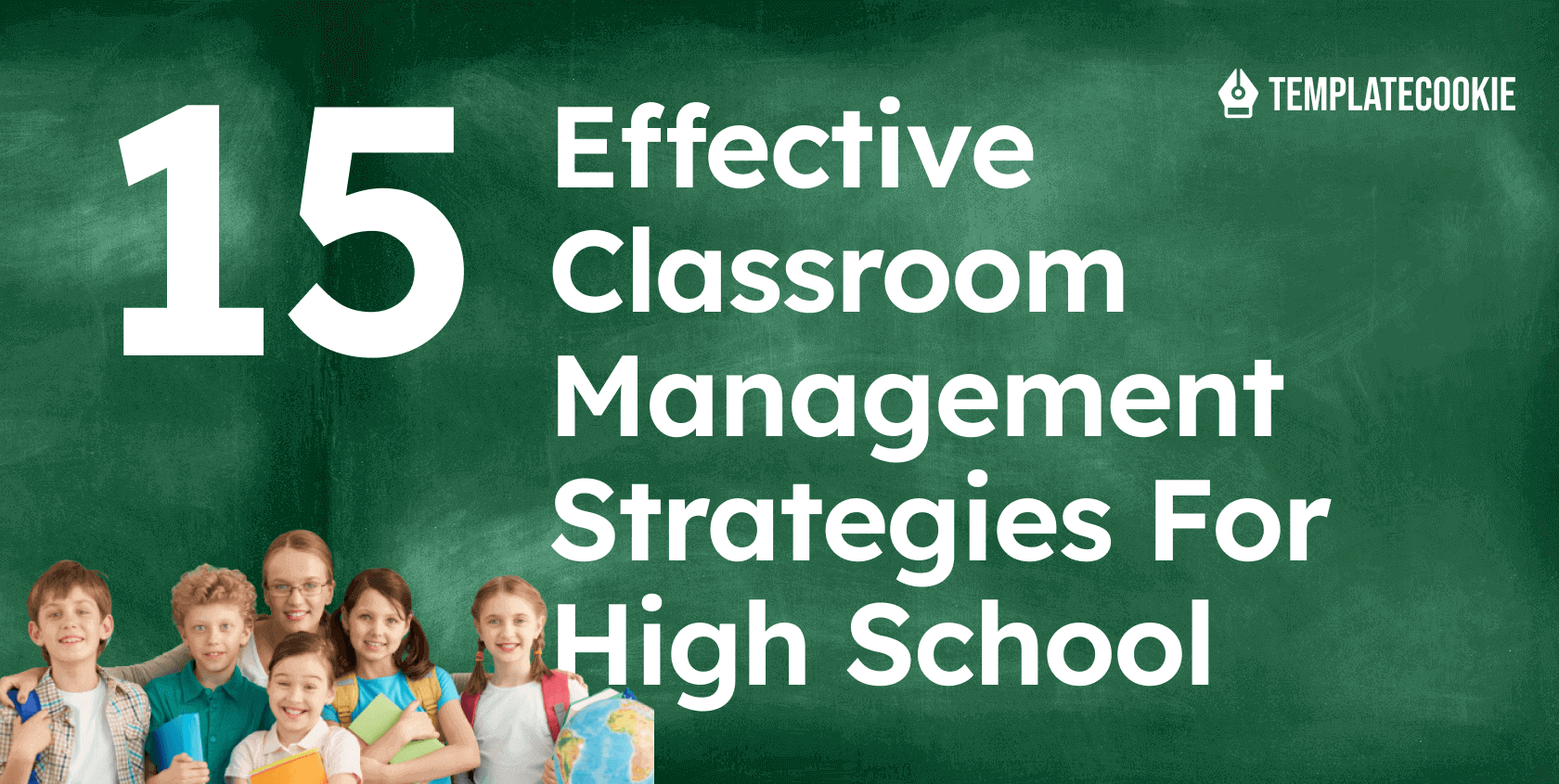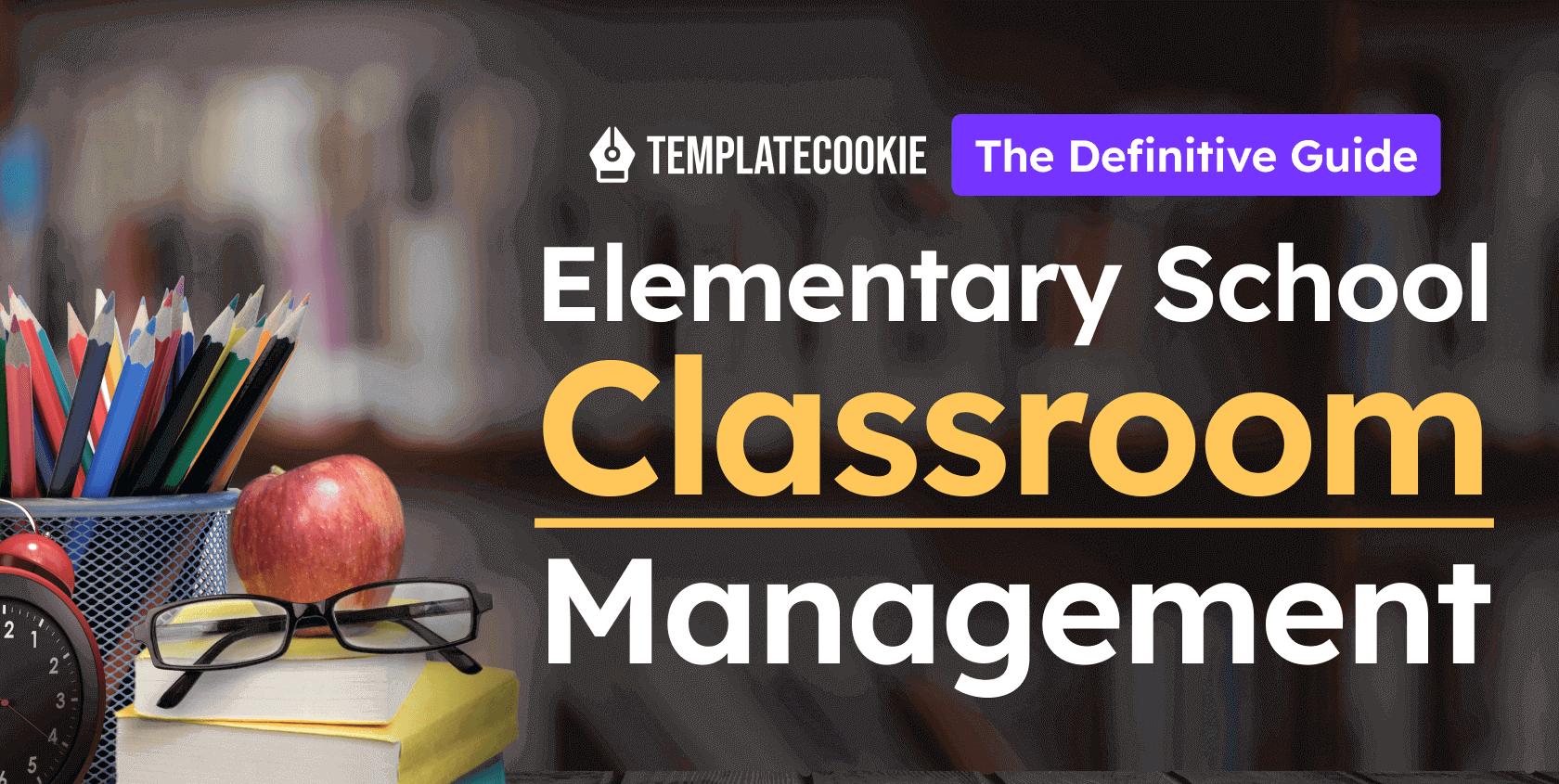Blog Details
Classroom Management Plan - The Definitive Guide

Managing a classroom is a complex and multifaceted process that requires planning, preparation, and flexibility.
A strong classroom management plan is crucial for achieving a productive and positive learning environment. It establishes routines, expectations, and procedures that help students stay on task, work collaboratively, and develop strong academic and social skills.
In this article, we'll provide you with the definitive guide to creating a classroom management plan that works for your students and your teaching style.
We'll cover the key elements of effective classroom management, including setting expectations, establishing routines, building positive relationships, using reinforcement and consequences, and encouraging student responsibility.
Increase your classroom efficiency with our Premium School Management System: Schooling
What Is A Classroom Management Plan?
A classroom management plan is a comprehensive strategy designed to create a productive and supportive learning environment. A well-designed plan sets clear expectations for behavior, establishes routines and procedures for classroom activities, and provides a framework for positive student-teacher relationships.
A classroom management plan typically includes a set of rules or expectations that students are expected to follow, such as respecting others, participating in class, and being on time. These rules are designed to establish a culture of respect and collaboration in the classroom, which in turn promotes a positive learning environment.
In addition to setting expectations, a classroom management plan outlines the procedures for different classroom activities, such as entering and exiting the classroom, transitioning between lessons, and working in groups. By providing a clear and consistent framework for classroom activities, a well-designed plan helps to minimize disruptions and keep students on task.
Finally, a classroom management plan establishes a framework for positive relationships between teachers and students. This includes strategies for building rapport with students, providing positive reinforcement for good behavior, and addressing misbehavior in a fair and consistent manner.
Why Do You Need A Classroom Management Plan?
Promotes a Positive Learning Environment
A classroom management plan sets clear expectations for behavior and establishes a positive and supportive learning environment. This environment allows students to feel safe, respected and engaged in their learning.
A classroom management plan helps to minimize disruptions, such as off-task behavior or disruptive talk, that can detract from student learning.
When students know what is expected of them and how they should behave in the classroom, they are more likely to take ownership of their learning and be motivated to succeed.
Increases Student Achievement
An effective classroom management plan can increase student achievement by reducing time spent on managing behavior issues and increasing time spent on instruction.
When students are engaged in learning activities, they are more likely to develop a deeper understanding of the material and perform better on assessments.
Additionally, students who feel safe and supported in the classroom are more likely to take risks and be willing to ask questions or seek help when they need it.
Creates Positive Relationships
A classroom management plan provides a framework for building positive relationships between teachers and students. When teachers create a positive and supportive classroom environment, they establish trust and rapport with their students.
This trust can lead to stronger relationships and a greater sense of community within the classroom. By building positive relationships with students, teachers can better understand their individual needs and strengths and can adapt instruction to meet those needs.
Positive relationships also create an environment where students feel comfortable communicating their concerns or asking for help when they need it.
Encourages Student Responsibility
A classroom management plan encourages students to take responsibility for their own learning and behavior.
When students know what is expected of them and understand the consequences of their actions, they are more likely to take ownership of their behavior and strive for success.
A well-designed plan empowers students to make positive choices and reinforces the idea that they are responsible for their own learning and development.
Helps Teachers Be Consistent
A classroom management plan helps teachers be consistent in their approach to behavior management.
When teachers have a clear set of expectations and consequences, they can respond to misbehavior in a fair and consistent manner. This consistency creates a sense of predictability in the classroom and helps students understand what is expected of them.
Additionally, a consistent approach to behavior management can help build trust with students and establish a positive classroom culture.
Reduces Stress
Managing a classroom can be stressful, particularly for new teachers or in challenging teaching environments.
A classroom management plan can help reduce stress by providing a clear framework for managing behavior issues and creating a positive classroom environment.
When teachers have a plan in place, they are better equipped to handle unexpected challenges or disruptions, which can help reduce stress and increase job satisfaction.
Fosters Inclusivity
A classroom management plan helps to foster inclusivity in the classroom. By setting clear expectations for behavior and outlining the consequences for inappropriate actions, a plan can help create a level playing field for all students.
When students know that they will be held accountable for their behavior, they are more likely to respect each other and work together.
Besides, a well-designed plan should take into account the needs and strengths of all students, including those with disabilities or who speak a different language.
Saves Time
A classroom management plan can save teachers time by providing a clear framework for managing classroom activities and behavior.
When teachers have a set of routines and procedures in place, they can more efficiently manage tasks like taking attendance, distributing materials and transitioning between lessons.
Moreover, a plan can help minimize disruptions and reduce time spent on addressing misbehavior. This extra time can be used for instruction or for building positive relationships with students.
How Do You Create A Classroom Management Plan?
Define Your Classroom Culture and Expectations
The first step in creating a classroom management plan is to define the culture and expectations you want to establish in your classroom. Consider what values and behaviors are essential to you and how you want your students to interact with each other and with you.
Write down a few key ideas, such as respect, responsibility, and collaboration, that you want your students to embrace.
Establish Routines and Procedures
Routines and procedures are the backbones of a well-managed classroom. They provide structure and predictability, which helps students feel more secure and focused.
Determine what routines and procedures you will use, such as how you will begin and end class, how you will handle transitions, and how you will manage materials and supplies.
Be clear and consistent in your expectations, and make sure to teach and practice each routine and procedure with your students.
Develop a System For Behavior Management
When students don't meet your expectations, you need to have a system in place to address their behavior. Determine what consequences you will use for negative behavior, such as verbal warnings, loss of privileges, or parent conferences, and make sure you are consistent in enforcing them.
Consider using positive reinforcement to encourage and recognize good behavior, such as verbal praise, class-wide rewards, or individual incentives.
Establish Communication Protocols
Effective communication is essential to building a positive classroom culture and managing student behavior. Determine how you will communicate with your students, such as through class discussions, one-on-one meetings, or digital tools.
You should also establish how you will communicate with parents or guardians, such as through email, phone calls, or parent-teacher conferences. Be sure to communicate regularly and proactively, not just when there is a problem.
Address Accommodations and Individual Needs
Every student has unique needs, so it's important to create a management plan that addresses accommodations for students with disabilities, behavioral issues, or other individual needs.
Consider how you will differentiate instruction and provide support for struggling students. Work with your school's special education team or guidance counselors to ensure that you are meeting the needs of all students in your classroom.
Review and Revise Your Plan
Your classroom management plan is a living document that should be reviewed and revised on a regular basis. Solicit feedback from your students, parents, and colleagues, and make adjustments as needed to ensure your plan is effective.
Be willing to try new strategies and approaches, and be open to feedback from your students and colleagues.
How Do You Use Your Plan In The Classroom?
Introduce The Plan To Your Students
At the beginning of the school year, take the time to introduce your classroom management plan to your students. Start by explaining your expectations for behavior, respect, and responsibility in the classroom.
Discuss the routines and procedures that you have established, and how they will help your students stay organized, focused, and productive. Make sure that your students understand the reasons behind each component of the plan, and how it will help them succeed.
Teach and Practice The Routines &Procedures
Before implementing your classroom management plan, take the time to teach your students the routines and procedures that you have established. Demonstrate each step of the routine, and be clear and specific about your expectations.
Provide plenty of opportunities for your students to practice each routine, and be willing to provide feedback and guidance as needed. This will help your students understand exactly what is expected of them, and how they can follow the routines and procedures successfully.
Enforce The Plan Consistently
Once you have introduced your classroom management plan and taught your students the routines and procedures, it is time to start enforcing the plan consistently. Be firm and fair when enforcing your expectations, and make sure that all students are held accountable for their behavior.
Be clear about the consequences of negative behavior, and make sure that your students understand what will happen if they do not meet your expectations. Also, be sure to recognize and reward positive behavior, so that your students are motivated to meet your expectations.
Communicate Regularly With Students and Parents
Effective communication is key to successful classroom management. Be sure to communicate regularly with your students, both individually and as a class. Provide feedback on their behavior, and address any concerns or issues that arise.
Also, communicate regularly with parents to keep them informed of their child's progress and behavior. This will help you stay connected with your students and their families, and provide you with the support and resources you need to effectively manage your classroom.
Monitor and Adjust Your Plan if Needed
Regularly monitor your classroom management plan to ensure that it is working effectively. If you notice any issues or areas that need improvement, be willing to make adjustments to your plan.
Solicit feedback from your students and colleagues, and be open to trying new strategies and approaches. This will help you ensure that your classroom management plan is effective, and that your students are meeting your expectations.
Celebrate Success
Finally, be sure to celebrate success with your students. Recognize and praise positive behavior, and reward your students for meeting your expectations.
This will help reinforce your classroom culture and encourage your students to continue to meet your expectations. Celebrating success will also help create a positive and supportive learning environment, where your students feel valued, respected, and motivated to succeed.
What Are Some Common Mistakes That Teachers Make When Creating A Plan?
Failing To Consider The Unique Needs of Students
One common mistake that teachers make when creating a classroom management plan is failing to consider the unique needs of their students. Every group of students is different, and what works for one group may not work for another.
Teachers who fail to consider the individual needs and characteristics of their students may end up with a plan that is ineffective, or that causes more problems than it solves.
To avoid this mistake, teachers should take the time to get to know their students, and use that knowledge to inform their classroom management plan. They should also be willing to adjust their plan as needed to better meet the needs of their students.
Being Too Strict or Too Lenient
Another common mistake that teachers make when creating a classroom management plan is being too strict or too lenient. Teachers who are too strict may create an environment that is overly rigid, and that doesn't allow for individuality or creativity.
On the other hand, teachers who are too lenient may struggle to maintain control of the classroom and may have difficulty enforcing their expectations.
To avoid this mistake, teachers should strive for a balanced approach to classroom management, one that provides clear expectations and consequences while still allowing for flexibility and creativity.
Not Consistently Enforcing The Plan
A third common mistake that teachers make when creating a classroom management plan is not consistently enforcing the plan.
Teachers who are inconsistent in their enforcement of classroom expectations may create confusion among their students and may fail to create a sense of accountability. This can lead to behavior problems and a lack of respect for the teacher's authority.
To avoid this mistake, teachers should be consistent in their enforcement of classroom expectations and should make sure that all students are held accountable for their behavior.
Teachers should also be clear about the consequences of negative behavior and should follow through on those consequences consistently.
Failing to Involve Students in the Plan
Another common mistake that teachers make is failing to involve their students in the creation of the classroom management plan.
When students are not involved in the creation of the plan, they may not feel invested in it, or may not understand the reasons behind the expectations and rules.
To avoid this mistake, teachers should involve their students in the process of creating the classroom management plan. This can include discussing expectations and rules with the class, soliciting feedback and suggestions from students, and co-creating some aspects of the plan with students.
Creating a Plan That is Too Complicated or Unrealistic
Lastly, some teachers make the mistake of creating a classroom management plan that is too complicated or unrealistic. If the plan has too many expectations or rules, or if the expectations are too difficult for students to meet, it can be overwhelming and discouraging.
Students may feel frustrated and resentful if they perceive the expectations to be unfair or unrealistic. To avoid this mistake, teachers should strive to create a classroom management plan that is simple and realistic, with clear expectations and consequences that are appropriate for the student's age, development, and abilities.
The plan should be easily understood by both the teacher and the students and should be focused on promoting a positive learning environment that supports student success.
Conclusion
Creating a classroom management plan is an essential component of effective teaching. Without a solid plan in place, teachers may struggle to establish a positive and productive learning environment, leading to difficulties in maintaining control of the classroom and supporting student success.
By taking the time to carefully consider the unique needs of their students, involve them in the creation of the plan, and strive for a balanced approach to discipline, teachers can establish a positive and supportive classroom environment that promotes student learning, engagement, and success.
It is important to remember that creating a classroom management plan is an ongoing process that requires consistent evaluation and adjustment to meet the changing needs of the students.
By continuously improving and refining their plan, teachers can provide their students with the best possible learning experience, setting them up for success both in and out of the classroom.
Read More

Responsive Classroom - The Definitive Guide
Responsive Classroom is an evidence-based approach to teaching that prioritizes the social, emotional, and academic development of students. It is designed to creat...
Read More
15 Effective Classroom Management Strategies For High School
High school teachers and administrators face numerous challenges in managing their classrooms, from student disengagement to disruptive behavior. However, with effe...
Read More
Elementary Classroom Management - The Definitive Guide
As an educator, you are responsible for fostering a positive, encouraging, and engaging learning environment for your students. This guide is designed to equip...
Read More